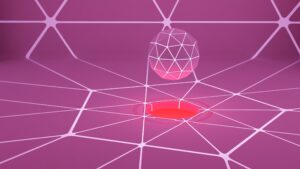Stress Management
In the rapidly evolving landscape of the Digital Age, technology has seamlessly integrated into almost every facet of our daily routines. From the startling chime of morning alarms on our smartphones to the evening scroll through social media feeds, digital connectivity is as omnipresent as the air we breathe. While this era offers unparalleled convenience and endless avenues for communication, it comes with its own set of shadows. One such shadow, often lurking silently in the recesses of our modern lives, is the concept of burnout. It’s no longer just associated with long hours at the office or grueling physical tasks. Today, burnout is manifesting in the realm of pixels and notifications, where the line between online and offline constantly blurs. As we navigate this ever-connected digital landscape, understanding and addressing the unique strains it places on our well-being becomes paramount. Welcome to the exploration of digital burnout, a contemporary challenge that demands our attention now more than ever.
Understanding the Modern Digital Landscape
As the dawn of the 21st century ushered in a wave of technological innovation, it brought with it an era of unparalleled connectivity. At the heart of this digital revolution stands the smartphone – an unassuming device that has transformed from a mere communication tool into an almost indispensable extension of ourselves. Coupled with the proliferation of smart devices – from wearable tech to smart homes – our lives are more intertwined with the digital realm than ever before.
Access to the internet, once a luxury confined to bulky desktops, is now available 24/7 right at our fingertips. This round-the-clock connectivity has its set of advantages: real-time information, instantaneous communication, and a world of knowledge and entertainment perpetually accessible.
Yet, the sword of constant connectivity is double-edged. The pitfalls? An erosion of personal boundaries, dwindling moments of genuine solitude, and the diminishing distinction between work and leisure. This can lead to a sense of perpetual engagement, leaving little room for mental and emotional respite.
Social Media's Influence
The digital age, while marked by myriad technologies, is perhaps most notably characterized by the rise of social media platforms. What began as platforms for simple interaction and reconnecting with old friends has morphed into influential powerhouses that shape narratives, trends, and even societal behaviors.
Platforms like Facebook, Instagram, TikTok, Reddit, Threads and Twitter have not only given individuals a voice but have also spawned an entire ecosystem centered around ‘likes’, ‘shares’, and ‘follows’. With this, however, comes the intense pressure to present a curated, often idealized version of our lives. Behind the highlight reels are individuals battling anxiety, envy, and insecurity. The constant comparison and the chase for validation can have a profound emotional toll, pushing some to the brink of their mental capacities.
Always-On Culture
But what exactly do we mean by the term “Always-On Culture”? It’s a culture where, facilitated by our devices, we’re expected to be continuously reachable, responsive, and engaged, irrespective of the hour or place. It’s the ping of an email at midnight, the tug to check just one more notification, or the phantom vibrations you feel, even when your phone hasn’t buzzed.
This expectation of perpetual availability, once limited to high-stress professions, is now becoming the norm across various sectors and personal lives. The repercussions? Burnout, sleep disturbances, reduced quality of personal relationships, and a pervasive sense of being overwhelmed. Being always-on might have us more connected than ever, but at the risk of disconnecting from our own selves and immediate surroundings.
As we delve deeper into the intricacies of the digital landscape, it becomes evident that while the marvels of technology have ushered in an era of convenience and global connectivity, they’ve also introduced unique challenges that our predecessors never had to grapple with. Recognizing these challenges is the first step toward addressing them.
The Digital Age Impact: Symptoms and Mental Health Consequences
Digital burnout can be insidious, creeping into our lives subtly and often going unnoticed until it becomes severe. Some key indicators include:
- Emotional Exhaustion: Feeling drained after spending short durations on devices or social media.
- Reduced Performance: Difficulty concentrating or completing tasks that once seemed easy.
- Cynicism: Developing a negative attitude towards digital tasks or feeling that online engagements are increasingly meaningless.
- Social Withdrawal: Avoiding virtual interactions or feeling the need to disconnect entirely from online platforms.
- Physical Symptoms: Including headaches, disrupted sleep, or eye strain from prolonged screen exposure.
The Effect of Digital Environments On Mental Health
Our online environments are not just tools; they’re spaces we inhabit, and like any environment, they shape our mood, perceptions, and mental well-being. The immediacy of digital feedback – whether in the form of likes, comments, or emails – can create a roller-coaster of emotions, from euphoria to despair. The constant barrage of highlight reels from peers on social media can foster feelings of inadequacy or FOMO (Fear of Missing Out).
Moreover, the digital realm rarely rests. The incessant flow of information can lead to cognitive overload, diminishing our ability to process emotions or think critically.

The Cycle of Stress and Overstimulation Leading to Burnout
The relationship between the digital world and our mental health can often be cyclical. It starts with the allure of constant connectivity, leading to overstimulation. This overstimulation makes it challenging to unplug, even when we recognize the need for a break. The persistent engagement fuels stress, and without adequate breaks or digital detoxes, this stress accumulates, eventually leading to burnout.
Consider the following examples of individuals led to digital burnout:
Elena: A content creator with a following of over 100k on Instagram, Elena felt the constant pressure to produce and engage. The numbers became her validation. But one day, she found herself breaking down, unable to post or even open the app. She took a three-month break, realizing that her self-worth was far more than likes or comments.
Sam: Working remotely, Sam felt the lines blur between personal and professional life. He’d often work till the wee hours, answering emails, and attending late-night calls. It wasn’t until he faced severe sleep disorders and anxiety that he acknowledged the cost of the ‘always-on’ work culture.
Priya: An avid gamer, Priya found solace in the virtual world. But the constant exposure to the screen and the adrenaline of games started affecting her sleep. She’d stay up nights, feel fatigued during the day, and slowly lost interest in other activities she once loved.
As you continue navigating this blog post, it’s essential to remember that digital burnout is not a reflection of one’s resilience or capability. It’s a product of our times, a challenge of the modern age, and recognizing it is the first step towards healing and finding balance.
Work-Life Balance in the Digital Age
The Digital Age, with its myriad of tools and platforms, has fundamentally altered the way we approach work and leisure. While there are undeniable advantages, it has also ushered in challenges that impact the delicate balance between our professional and personal lives.
The Blurred Lines Between Professional and Personal Lives
Gone are the days when leaving the office meant the end of the workday. With smartphones and high-speed internet, our work often follows us home. Virtual meetings, late-night emails, and instant messaging apps blur the boundaries, making it harder to delineate where work ends and personal time begins. A recent study from the Journal of Medical Science and Research found that 68% of remote workers struggle with separating their professional tasks from personal obligations, leading to extended work hours and decreased leisure time.
Practical Steps and Strategies to Maintain Separation and Balance
Designated Workspaces: Even if working from home, set aside a specific space for work-related tasks. This physical separation helps mentally compartmentalize work and personal life.
Set Work Hours: While flexibility is a perk of remote work, it’s beneficial to establish and adhere to a routine. Start and finish work at the same time each day to maintain a sense of normalcy.
Digital Detox: Dedicate certain hours of the day, like dinner or bedtime, as tech-free times. This can help you unplug and prioritize face-to-face interactions with loved ones.
Use Technology to Your Advantage: Utilize apps and tools designed to aid in work-life balance, such as time-tracking apps or ‘Do Not Disturb’ features.
Emphasizing the Importance of 'Switching Off' and Setting Boundaries
‘Switching off’ doesn’t merely mean turning off our devices, but also mentally disconnecting from work and giving ourselves permission to relax and recharge. Setting boundaries is crucial. It’s essential to communicate clearly with colleagues and superiors about your availability outside of work hours. While the Digital Age offers the convenience of perpetual connectivity, it’s up to us to determine when to harness it and when to step away.
In an era where technology constantly beckons, achieving work-life balance in the Digital Age requires conscious effort, self-awareness, and proactive strategies. The rewards – improved mental well-being, enriched personal relationships, and sustained professional productivity – are well worth the effort.
Digital Information Overload: Deciphering the Deluge
The human brain is a remarkable organ, designed to process and analyze vast amounts of information. However, it’s not equipped to handle the sheer volume of digital stimuli that many of us encounter daily. Each piece of information we engage with demands cognitive resources. As we juggle multiple streams of digital data, our brain’s processing capability can get overwhelmed, leading to mental fatigue.
Additionally, constantly switching between tasks – like checking an email in the middle of a project or responding to a message while watching a video – can exhaust our mental resources. This constant task-switching deteriorates our attention span and leads to cognitive fatigue, often referred to as ‘brain fog’.
Strategies to Minimize Digital Distractions and Foster Focused Engagement
Single-Tasking: While multi-tasking might seem efficient, it can hamper productivity and focus. Dedicate specific blocks of time to single tasks, ensuring full engagement and better outcomes.
Digital Declutter: Reduce unnecessary notifications on your devices. Unsubscribe from redundant emails, organize your desktop, and curate your social media feeds to minimize distractions.
Use Technology Mindfully: Consider tools and apps that promote focused work, such as “Pomodoro timers” or apps that block distracting sites during designated times.
Scheduled Breaks: Plan short breaks during your day for relaxation and to give your brain a rest. This can help in refreshing your mind and reducing the feeling of being overwhelmed.
Mindfulness Practices: Engage in mindfulness or meditation exercises to train your brain to remain present and reduce the compulsion to constantly check devices.
Digital Sabbaticals: Dedicate certain days or weekends where you significantly reduce digital engagement. This can help in recalibrating your focus and reducing the impact of information overload.
As we navigate the Digital Age, it’s vital to recognize the toll that constant digital engagement can take on our cognitive and emotional well-being. By implementing strategies to combat digital information overload, we can reclaim our focus, boost our productivity, and nurture our mental health.

Conclusion
As our journey through the Digital Age continues, we must remain vigilant of the multifaceted challenges it presents. Foremost among these is the specter of digital burnout—a modern-day malaise that stems from the relentless rhythm of our always-connected lives.
The stories of Elena, Sam, Priya, and countless others underscore a universal truth: No one is immune to the pressures and strains of the digital world. Yet, in acknowledging this vulnerability lies our strength. By recognizing the early signs of digital burnout, we are better equipped to navigate the Digital Age without sacrificing our mental and emotional well-being.
In a world where screen glows often outshine the light of day, prioritizing our mental well-being becomes paramount. This isn’t a call to abandon technology but to engage with it mindfully. It’s an invitation to cultivate digital habits that enhance, rather than diminish, our quality of life.
As you step forward, equipped with knowledge and strategies to combat digital fatigue, we urge you to not just implement these measures but to also share your experiences. Whether it’s a digital detox success story or a struggle with setting boundaries, your narrative has the power to resonate, inspire, and foster a community of support. Together, we can pave a path that balances the marvels of the Digital Age with the timeless value of human connection and well-being.
Tools and Apps to Aid in Digital Well-being
Below, you’ll find a list of applications and outside tools to aid in your discernment of time spend in the digital world. Please be mindful of not abusing these applications, and once again falling into a trap of absorption.
Freedom: An app that blocks distracting websites and apps, helping you to focus on what matters most.
Flux: Adjusts your computer’s display to the time of day, reducing blue light exposure during evenings.
Moment: Tracks your device usage and provides insights on how you can reduce unnecessary screen time.
Digital Wellbeing (Android) & Screen Time (iOS): Built-in features on Android and iOS devices that provide detailed insights into your phone usage and allow you to set limits for apps.
Forest: A productivity app that encourages you to stay off your phone by growing a virtual tree, which withers if you exit the app.
Recommendations for Further Reading:
“Digital Minimalism” by Cal Newport: A deep dive into the philosophy of tech use in which Newport advocates for a more intentional approach to digital tools.
“The Shallows: What the Internet Is Doing to Our Brains” by Nicholas Carr: An exploration of how the internet impacts our cognitive functions.
“How to Break Up With Your Phone” by Catherine Price: A practical guide filled with actionable tips to help reduce smartphone dependence.
Article: “The Age of Distraction: Getting Students to Put Away Their Phones and Focus on Learning” in Education Week. This article discusses the impact of constant digital distractions on learning and strategies educators employ to combat them.
By utilizing these tools and diving deeper into the recommended readings, you can further equip yourself with strategies and insights to foster digital well-being in the Digital Age.
SHARE
THREADS

Caroline
As a tech industry professional, she experienced the detrimental effects of burnout and chronic pain firsthand. Motivated by her own journey, she now dedicates herself to assisting others in finding resources and support.
Related
Caroline Who?

As tech industry professional, Caroline experienced the detrimental effects of burnout and chronic pain firsthand. Motivated by her own journey, she now dedicates herself to assisting others in finding resources and support. Through The Happy Soup, Caroline shares resources and personal stories, providing a roadmap for recovery and offering a guiding hand to those facing similar challenges. With a compassionate approach, she inspires individuals to reclaim their lives, emphasizing that they are not alone in their struggles.

